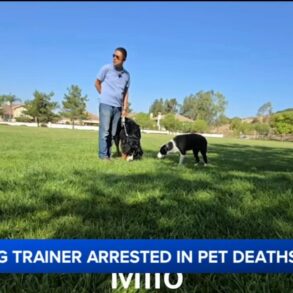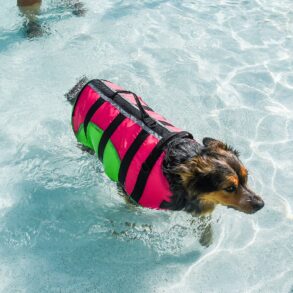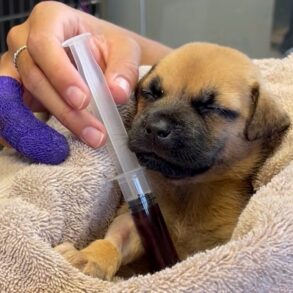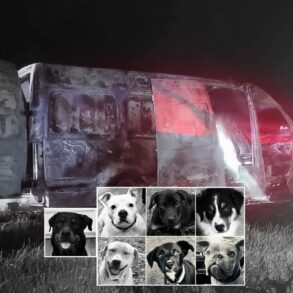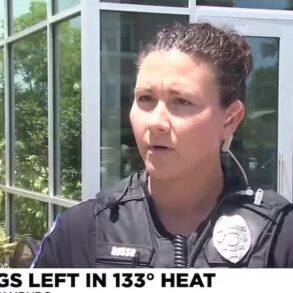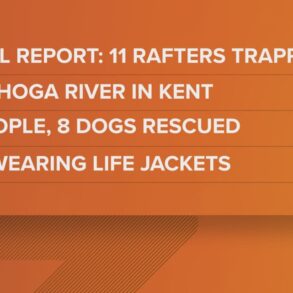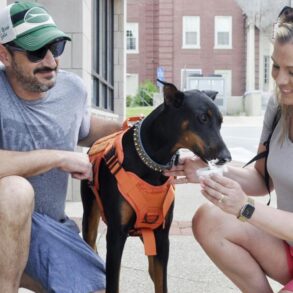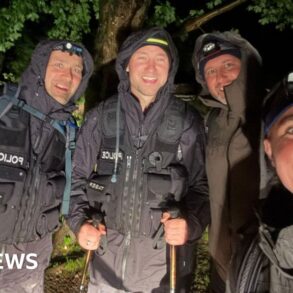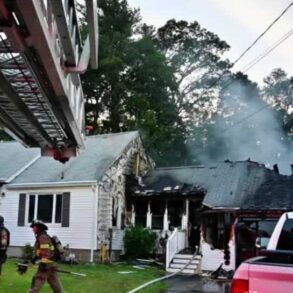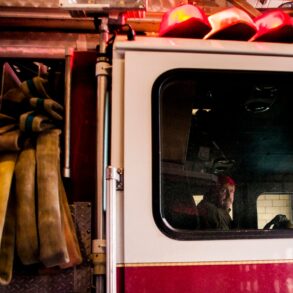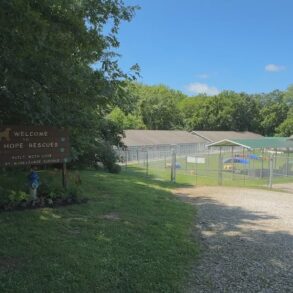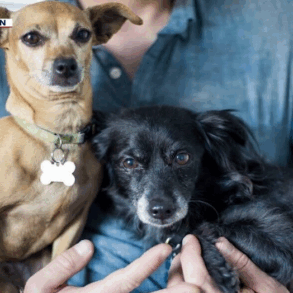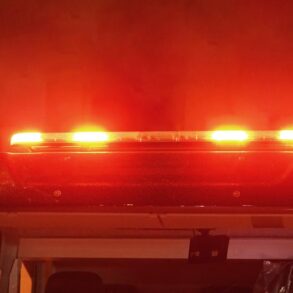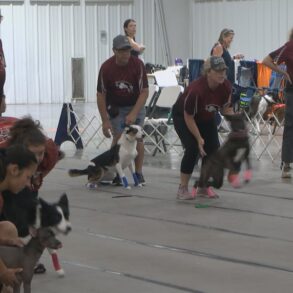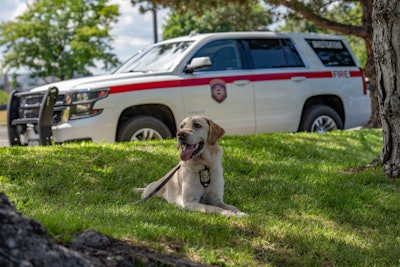 ROTC is certified as an ignitable liquid detection K9 through the Maine State Police at the Maine Criminal Justice Academy.IMAGE: Colorado Division of Fire Prevention and Control
ROTC is certified as an ignitable liquid detection K9 through the Maine State Police at the Maine Criminal Justice Academy.IMAGE: Colorado Division of Fire Prevention and Control
Arson is a serious crime that causes considerable damage, but it is often hidden from view, according to Brian Eberle, a K9 handler with the Colorado Division of Fire Prevention and Control.
Arson detection dogs are a crucial tool in fire investigations due to their unmatched accuracy and speed. However, Eberle notes there are only 104 certified arson dogs in the U.S. and Canada assigned to investigate these crimes.
The limited number of K9s underscores the urgent need for specialized resources to combat arson-related crimes. The Colorado Division of Fire Prevention and Control, where Eberle is a K9 handler, is doing its part to ensure the state has the arson dogs it needs.
This agency has four trained to detect ignitable liquids, track/trail, and detect decomposing human scent. Besides, ROTC, the 7-year-old male yellow lab handled by Eberle, there is Ash, a one year old yellow lab handled by Matt Morgan. There is also a cadaver dog named Moose, and Hiccup, a bloodhound tracking dog.
Eberle has been in the fire service for 21 years and has worked with K9s for 17 of them. In this capacity, his teams have aided many arson, homicide and missing person cases.
ROTC is the organization’s oldest K9. He is certified as an ignitable liquid detection K9 through the Maine State Police at the Maine Criminal Justice Academy. Since 2020, Eberle and ROTC have worked together, assisting many agencies such as the ATF, CBI, and FBI in fire investigations.
One of their high-profile cases occurred shortly after the Supreme Court decision on Roe vs. Wade. In this case, a local pregnancy clinic was set on fire.
ROTC discovered three areas in the building that tested positive for accelerant. By collaborating with the police and reviewing video footage, fire investigators discovered an individual had thrown Molotov cocktails into the building.
In Colorado, if someone uses an accelerant in a fire, the crime category changes to a crime of violence, Eberle says.
“When that case finally gets to the court system here, that individual will have that enhancer on them for using an accelerant,” he says. “The court will see it as a more egregious crime than if he had tried to burn down someone’s home by just making a good fire.”
The Nose Knows
The above case is a prime example of what an arson dog can do, according to Eberle.
“Arson is a lot more common than what the statistics really say, because it is, it is such a hard, hard crime to prove,” he explains. “Somebody could light their own kitchen on fire. We come out and talk to them. They tell us, ‘You know, I forgot that I had put something in the oven, and it caught fire.’ That fire will appear accidental unless they indicate otherwise.”
But, with an arson dog, fire investigators can help determine if the fire was started on purpose, he says.
“These dogs noses are more accurate than any sort of detection or equipment we have to locate any sort of accelerant,” he says. “The dogs can pinpoint where accelerant may have been used so we can get a sample. And it’s incredible how fast they can do it.”
Eberle says agencies can make the case for these dogs with the following selling points. One, fire scenes are very toxic. “Our fire investigators might spend two days working that scene, but a dog might spend a half hour to an hour working the same scene,” he says. “This cuts down on the time that our investigators spend in this toxic environment.”
Two, dogs are more accurate than any investigator or investigation tool. “If they show that there is an accelerant, most of the time we’re going to find the accelerant there,” he says.
Three, the dog’s nose will stand up in court, he adds.
Let’s say there is a court case involving a known arsonist, he says. The defense might claim that the fire investigator is biased because he or she knows the suspect has a history of arson.
“A dog isn’t biased,” he says. “They just run the scene and work, and if accelerant is there, they find it.”
Finally, arson dogs are a great public relations tool. “The dogs offer a great way to deliver fire safety messages and interact with the community,” he adds. “We bring our dogs to the Kiwanis Club, Elks Club, Optimist Club, local schools and more. We are funded by public tax dollars, so it’s nice to show that this is a tool that we use, paid for by your taxes, which makes our jobs safer and helps us do a better job.”
Initial Training
Training an arson detection dog is a highly specialized and resource-intensive process that requires a significant commitment of time and effort. Here are some essential aspects of the training:
- Selection: Finding the right arson dog begins with testing the dog’s scent detection abilities and drive to work. Through a series of assessments, including odor recognition tests and prey drive evaluations, dogs that show strong potential are chosen for further training. Typically, an arson dog is selected from hunting or herding breeds. Eberle explains these breeds are smarter, want to work and can work independently. “We lean more toward labrador retrievers on the arson side,” he says. “Most arson dogs work on a food reward system and a lab is very food motivated.” Labs are also floppy-eared dogs, which people find less intimidating than dogs with pointy ears, Eberle explains. “They have a good temperament and are very happy dogs,” he says. “They are great for public relations and education.”
- Basic Obedience: Before advancing to detection work, dogs must first complete basic obedience training. This foundational stage teaches them essential commands like sit, stay, and come, along with leash manners and crate training.
- Accelerant Detection Training: The core of arson dog training is teaching the dog to identify and alert to accelerant scents. Dogs are exposed to various substances such as gasoline, diesel fuel, and lighter fluid, so they learn to recognize these specific odors at fire scenes. “The dogs are trained to hit on hydrocarbon or petroleum-based distillates, which is everything from lighter fluid to paint thinner to gasoline and diesel,” he says.
- Scent Discrimination Training: Along with detecting accelerants, arson dogs must be able to differentiate these scents from others commonly found at fire scenes, like burned wood or plastic. This phase involves rigorous training to ensure the dog accurately identifies accelerants in complex environments.
- Handler Training: The last phase of training is for handlers, who undergo comprehensive training to learn how to effectively work with their dogs. This includes interpreting the dog’s body language and alerts, as well as properly documenting and collecting evidence from fire investigations. Together, the dog and handler form a critical team in identifying and solving arson cases.
For over 30 years, State Farm Insurance provided training through its Arson Dog Program. The insurance company delivered trained dogs free of charge to any public safety agency.
“State Farm recently shut this program down,” Eberle says. “This is an enormous loss. While there are other companies and kennels that can provide you a fully trained arson dog, it’s going to cost you $10,000 to $20,000 for the dog, and then you have the costs to keep the dog. The State Farm Arson Dog program donated a fully trained dog to a police or fire agency, which was a tremendous asset, because many departments do not have the budget to spend that much money on a dog. If they need bunker gear for their guys, they are going to buy that instead of a dog.”
International Fire Dogs, a 501c3 non-profit, was recently created by a retired arson dog handler to develop a new model to replace the funding gap created by State Farm’s departure
The ATF also has a program, he says. But ATF only trains about 8 dogs a year and the dogs are also only trained in Explosives or Accelerants-not both, he adds.
Ongoing Training Needs
Being an arson dog handler is a commitment, according to Eberle. There is no day of the week that the dog doesn’t need to work, which Eberle says may be why there are so few arson dogs in the U.S.
He explains the only time an arson dog eats is when they’ve detected an accelerant. That doesn’t mean ROTC, for example, doesn’t eat between fire calls. Rather, it means that every day Eberle trains ROTC before he eats.
“Because the dog is on 100% food reward, there’s never a day off,” he says. “We have to work them multiple times a day. If you start to slouch on training, they will become less reliable. It’s every day, seven days a week, for the dog’s entire working career, which can be eight to 10 years. If you go on vacation, you need to find a dog-friendly place to go, because this dog is integrated into every aspect of your life.”
He describes the food reward system like this: the dogs know they’ll get fed if they work. But it is not a fixed routine. Some days they might have a heavy training session and eat six cups of food, but the next day they may only get one cup.
Because of this unpredictability, “the dogs are always looking for that next meal,” he says. “They don’t know if they are going to eat again that day, so it taps into their wild instincts, and they are always ready to work.”
Let’s say they are training the dog on gasoline; in that case, Eberle may add a few drops in the garage and instruct the dog to find it. Once ROTC detects the scent, he will perform a passive alert by sitting and pointing his nose toward the source.
“And then I feed him,” he says. “ROTC is a bigger lab, around 72 pounds, so I do three to four trainings every day to make sure he gets enough food to survive.”
For those who think this may be cruel, Eberle says this is a “game” to the dogs and something they look forward to. “When ROTC sees the work pouch come out, he’s excited and ready to go,” he says. “He spends every day with me, so there’s a great bond with lots of attention. It is a happy experience for the dog.”
The most important part of this ongoing training is record keeping, Eberle adds.
“The biggest thing courts look for is the reliability of the dog, i.e., what they have done in the real world and how accurate they are,” he says. “One place they look for this information is in our training records.”
Eberle keeps a spreadsheet of every training session. What ROTC looked for, where it was, how long it took him to find it, and how much food he received. It also notes if he missed any spots, and what was done to correct this issue.
Working the Scene
When arson is suspected, an arson dog, like ROTC, is brought in for inspection, says Eberle.
“We wait until the scene has calmed down and is safe for the dog. We don’t want to put them in harm’s way,” he explains. “The term ‘arson dog’ isn’t entirely accurate, either. Their role is to help us identify whether an ignitable liquid was involved in the fire. However, discovering gasoline in a garage after a fire doesn’t indicate arson; it’s quite common to find gasoline there.”
Qualified evidence technicians collect samples from areas indicated by the dog, and the crime laboratory confirms if these samples contain ignitable liquids. Fire/arson investigators, canine handlers, and chemists then work together to establish if a crime has occurred.
“The dog’s purpose is to provide valuable data for investigators, but it’s up to the investigator to analyze that data and determine if a crime occurred,” he explains. “We’ll also examine burn patterns, witness statements, and other factors to make our conclusions.”
To safeguard the dog from toxins, the handler decontaminates it at the scene once its work is done. This involves cleaning their fur and paws, followed by a complete wash upon returning to the fire station.
Takeaways
Arson remains one of the most difficult crimes to prosecute, due to the lack of physical evidence. Fire itself is highly effective at destroying evidence, and firefighters’ rescue efforts often add to the challenge of gathering proof. Despite the best efforts of investigators—taking photos, clearing debris, and collecting samples—the national conviction rate for arson sits at a mere 10%.
One of the most promising tools to improve these odds is the use of K9s trained to detect accelerants. These highly specialized dogs offer a significant advantage, often uncovering crucial evidence that would otherwise be missed. With their assistance, the chances of securing a conviction in arson cases increases, offering hope in the fight against this devastating crime.
This post was originally published on this site be sure to check out more of their content.






